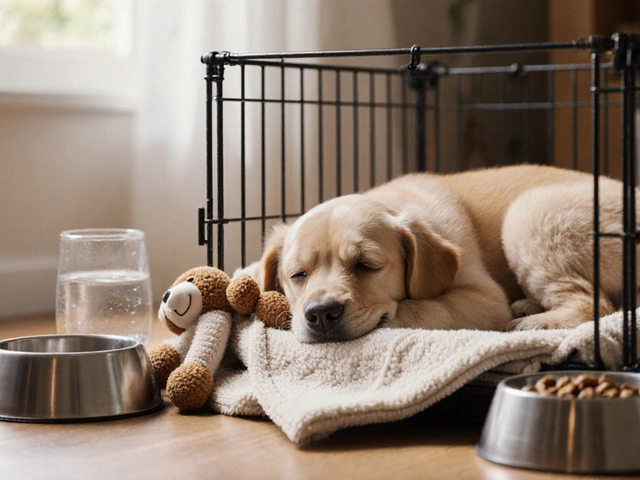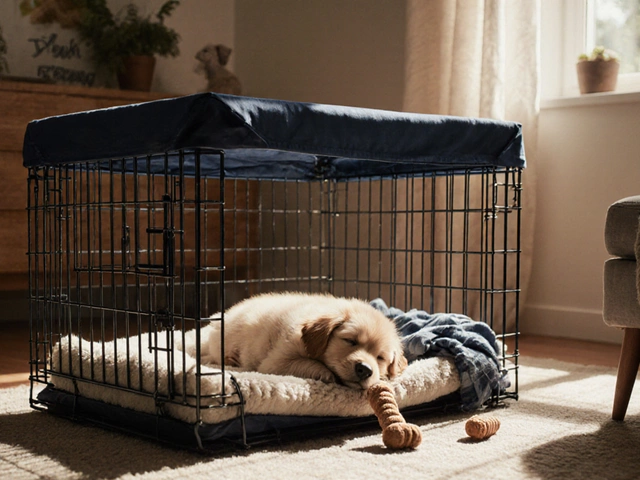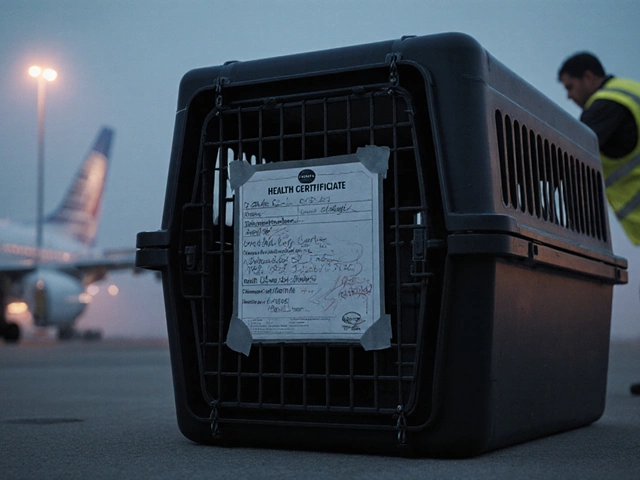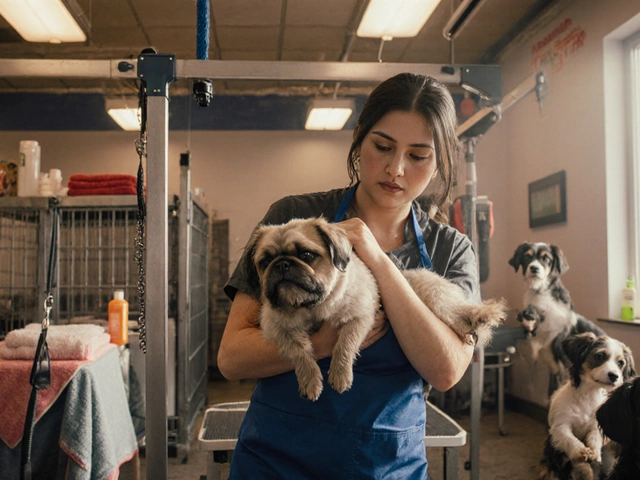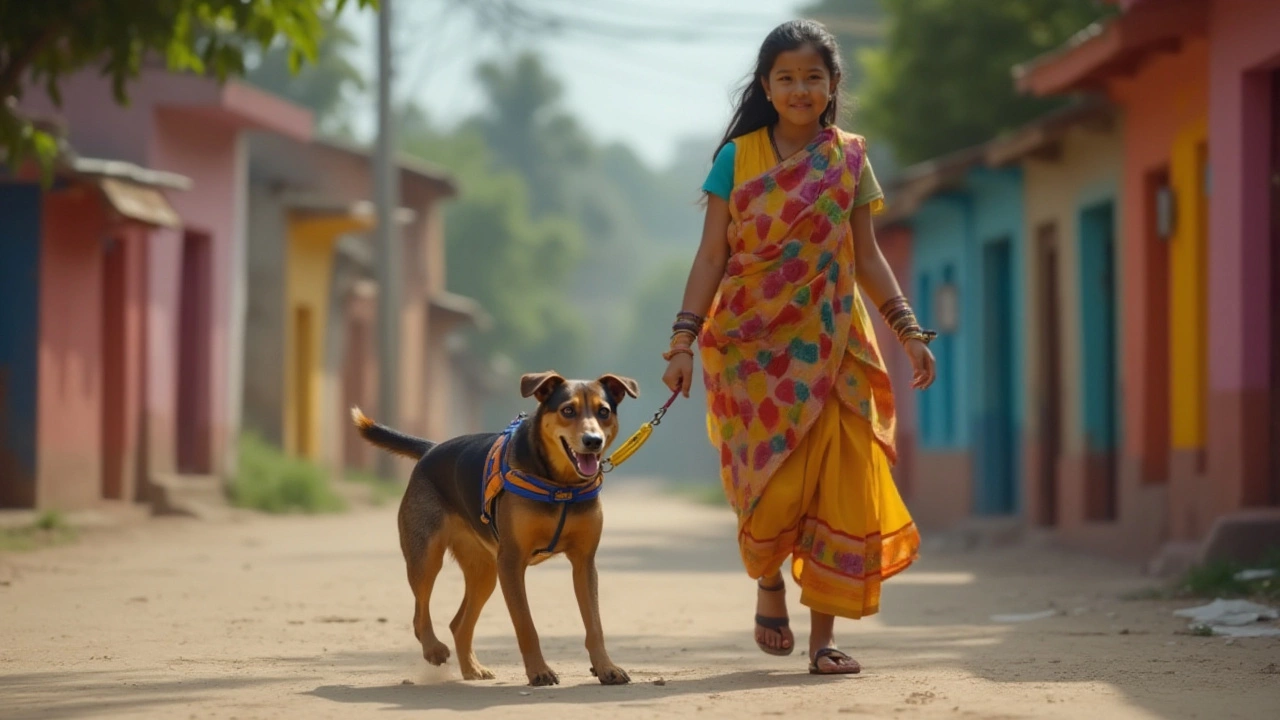
Taking your dog for a walk should be an enjoyable experience for both you and your furry friend. Yet, many dog owners find themselves dealing with a hyper and headstrong pup pulling them down the street. If this sounds familiar, you're not alone. Dogs pulling on their leashes is a common hurdle but one that can be overcome with the right approach.
Instead of turning every walk into a tug-of-war, you can learn how to teach your dog to stroll alongside you calmly. This article dives into various strategies that help address leash-pulling behavior effectively. From selecting suitable gear to understanding the psychology behind the pull, we'll uncover practical advice guaranteed to restore peace and enjoyment to your walking routine.
- Understanding Why Dogs Pull
- Choosing the Right Dog Collar
- Effective Training Techniques
- Consistency is Key
- Incorporating Positive Reinforcement
- Common Mistakes and How to Avoid Them
Understanding Why Dogs Pull
At the heart of why dogs pull on the leash lies a combination of instinct, curiosity, and sheer enthusiasm. Dogs are natural explorers, and when they step out into the world, every smell, sound, and sight beckons them to investigate with fervor. Imagine the vibrant colors and tantalizing scents they encounter, a world designed to entice their innate curiosity. This primal urge to explore and their superior olfactory and auditory senses often lead them to tug forward, eager to chase after the irresistible.
Another critical factor is the natural pace difference between humans and dogs. While humans prefer a slower, more leisurely pace, dogs are typically more energized and impatient, creating a disparity that manifests as tugging and pulling. It's important to acknowledge this difference, as it provides deeper insight into why traditional walking methods may fall short. Understanding their perspective is a crucial step in developing a strong bond centered around mutual enjoyment during walks.
In many cases, leash pulling can also be attributed to a lack of proper training early on or inconsistent commands during walks. Puppies and younger dogs, especially, are like energetic bundles of eagerness with very little training received initially. Implementing dog training exercises is vital to ensure they learn to walk patiently beside their owners rather than dragging them toward exciting distractions.
Dog behavior expert, Dr. Mark Johnson, explains,
"A large proportion of leash pulling is simply a reflection of a dog's excitement and urge to be ahead. Training is essential, but at the same time, acknowledging a dog's drive is paramount to walking together harmoniously."His words highlight the balance required in training—a mix of discipline yet understanding their emotions and natural drives.
In many breeds, the instinctual drive can be stronger due to their historical backgrounds. For instance, breeds like Huskies and Malamutes that were historically used for pulling sleds may naturally exhibit stronger pulling behaviors. Each breed carries specific tendencies, and awareness of these can aid in tailoring more effective leash training strategies.
Of course, there is also the immediate gratification of reaching their goal. Dogs have an innate sense of reward tied to pulling – a sort of psychological conditioning where pulling has previously got them where they want to go faster. Breaking this cycle requires the owner to employ patience, determination, and consistency to reverse this ingrained behavior.
Choosing the Right Dog Collar
The journey to effective leash training starts with selecting the right dog collar. With numerous options available, it can feel overwhelming when choosing the best one for your pup. A collar isn’t just a fashion accessory; it's a core tool in managing behavior and ensuring your pet's safety during walks. Different collars serve different purposes - from everyday use to specific training needs. When looking for the right option, factors like comfort, durability, and your dog's unique tendencies should guide your choice.
Understanding the various types of collars can make a world of difference. The classic flat collar is perhaps the most common, providing a simple, comfortable fit with a loop for attaching ID tags and a leash. For dogs prone to slipping out of regular collars, a martingale collar, which tightens slightly when pulled, can offer additional security without discomfort. Training collars, such as those featuring quick-release mechanisms or those designed for gentle guidance, might be an option for pets needing a bit more structure. However, it's vital to choose one that doesn’t inflict pain or fear, preserving the trust between you and your dog.
"Choosing the right collar is crucial in both effective training and the safety of your pet," notes Dr. Sophia Yin, a renowned veterinary behaviorist renowned worldwide. Her expertise highlights the significance of investing time to find a collar that suits the individual needs of both the dog and owner.
There’s also the matter of materials and build quality. High-quality nylon or leather are popular for their longevity and comfort. Be cautious of sharp edges or poor stitching that could chafe or irritate your dog’s skin, especially if they spend a lot of time with the collar on. Lightweight yet resistant materials are generally a good fit for active dogs. Reflective materials or integrated LED lights can provide an extra measure of safety during evening walks. These safety enhancements, while minor, can be lifesaving in low-light conditions by making your dog more visible to vehicles or other pedestrians.
It’s worthwhile to think about the specifics of your everyday routine. If your walks tend to happen in bustling urban areas, a collar that offers more control might be best. In contrast, for countryside strolls, a lightweight and breathable option could provide your canine companion with greater comfort. Several brands now offer technologically advanced collars capable of integrating with apps and GPS devices to help track your dog's activities and whereabouts. These innovative solutions reflect the merging of traditional pet care with modern technology improvements, catering to owners looking for tech-savvy solutions.
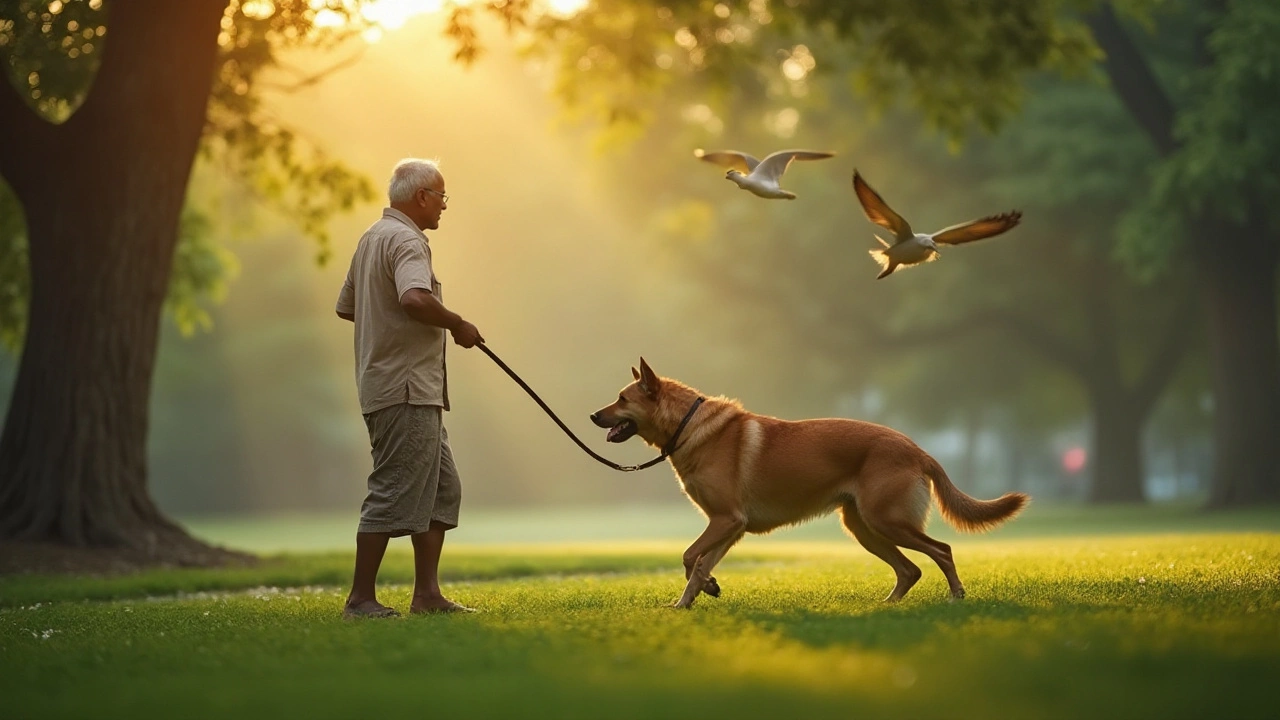
Effective Training Techniques
When it comes to preventing your dog from pulling on the leash, the approach often lies in the way you guide your training sessions. One essential technique involves practicing the art of patience. Teaching your dog to walk calmly by your side isn't a sprint but a marathon. A consistent training routine spearheaded by positive reinforcement is pivotal. During each session, you'll find that patience becomes your best friend as you gradually encourage your dog to break old habits. Consider beginning in a distraction-free environment before introducing more challenging settings. This helps your dog grasp the basics of proper leash behavior without the additional strain of competing stimuli.
Another noteworthy tip is to adopt the stop-and-go method. If your dog begins to pull, simply stop walking. This not only halts their momentum but also sends a clear message – the walk will not continue until they relax. Combine this with a verbal cue like “easy” or “wait” before resuming your stroll once the tension in the leash diminishes. Repetition is your ally in this technique, helping your dog to understand that pulling leads to nowhere fast. It's about teaching your companion that a steady pace is infinitely more rewarding than a hasty one.
Using the Right Tools
Sometimes, effective training is supported by the right equipment. A no-pull harness or a head collar might be just what you need. These tools provide better control over your dog's movements without causing discomfort. It's crucial, though, to introduce these devices gracefully. Encouraging your dog to associate the harness or collar with positive experiences will enhance their willingness to cooperate. In the long run, choosing the right tool tailored to your dog's comfort and size makes the training progress more seamless. Dogs may resist at first, but consistent, gentle reinforcement will encourage them to accept their new accessory.
Adapt the pace of your training sessions to match your dog’s unique personality. Instead of following a rigid timetable, evaluate how your dog responds to each session. The stop-and-go method, supplemented with generous praise and treats for good behavior, should be tailored to meet the specific needs of your dog. Remember, every dog learns differently. Legends like renowned animal behaviorist Dr. Patricia McConnell emphasize the dog's need for time and understanding, noting that,
"Rushing through training often causes more harm than good. Take it slow and mindfully nurture your dog's learning process."Each of these strategies aims to transform your dog's leash behavior step by step.
You may also find it beneficial to incorporate the "watch me" command as an attention-getting technique. This command invites your dog’s focus back to you whenever their gaze wanders too far or they start pulling. Establish this command first at home, using treats to entice eye contact consistently before attempting it during walks. The combination of a solid "watch me" command and the stop-and-go technique becomes a powerful tool in emphasizing that the *dog training* process is a collaborative effort. Seeing results can sometimes take a while, but the patience you invest in building this bond will undoubtedly pay off in the end.
Tracking Progress with Stats
Some pet owners find tracking progress to be immensely helpful. Consider maintaining a simple chart to record how many times your dog tugs during a walk, aiming for gradual improvement over weeks. Set milestones, and you'll find a greater sense of purpose in what may sometimes feel like a daunting task. A simple data record can look like this:
| Week | Pull Attempts | Successful Walks |
|---|---|---|
| 1 | 20 | 1 |
| 2 | 15 | 3 |
Your journey to a tug-free walk relies not only on these *dog training* techniques but also on viewing progress as small victories. Don't be discouraged by setbacks. Celebrate improvements, however minor, and foster a positive training ethos that encourages lasting change.
Consistency is Key
When it comes to stopping your dog from pulling on the leash, consistency is the cornerstone of success. Every single interaction with your dog reinforces some form of behavior, either good or bad. Understanding this is crucial. Dogs thrive on routine and predictability. They learn through consistent responses to their actions. Therefore, each walk is an educational moment. If you allow pulling one day because you're in a rush, your dog might think it's suddenly okay to pull because it achieved its goal—speedier access to where they wanted to go. Consistency requires dedication but pays off, creating a harmonious partnership where communication is clear and consistent.
An effective way to build consistency is by establishing a set of rules and a specific training method, sticking to them every day. Make sure every family member or anyone else who walks your dog is on the same page. Different techniques from different people only confuse dogs and delay progress. Think of it as teaching them a new language where each repetition and identical response to their action is a step toward fluency. Consistent use of training methods encourages dogs to understand your expectations, consequently reducing leash pulling.
In terms of actual training, employing a consistent pace when walking is vital. Dogs are perceptive, and any deviation in your walking pattern might become an unintended signal for them to act out. You might take a few moments before or during each walk to focus on matching your energies. Setting a clear boundary is imperative. For example, stop walking entirely when the leash is taut and resume only when it relaxes—that communicates to your dog that pulling results in no progress, thus teaching them patiently. This practice needs unwavering commitment for efficacy.
"Consistency and structure shape the behavior of dogs more effectively than occasional bouts of discipline," said renowned dog trainer Cesar Millan.
In conjunction with consistency in actions, verbal cues should remain uniform. Choose your commands wisely, utilizing words that you can use naturally and will remember easily. Importantly, use these commands intentionally and sparingly—the result is a well-trained dog who responds promptly to commands thanks to their repetitive association with specific outcomes. Remember to keep the tone of your voice steady. Dogs interpret changes in your tone as cues, too. If impatience creeps into your speech, it could confuse them and undo the clarity you are striving to build.
Working towards consistency might require an initial adjustment in mindset and routine. Research shows that behavioral changes in dogs can start becoming noticeable between three and four weeks of consistent training. With that in mind, preparing for the journey helps manage expectations. Consistency is not a sprint but a marathon, rewarding you with a dog that not only listens but enjoys and flourishes within the structured boundaries you set. This progress translates into an improved experience with daily dog walking, turning those leisurely endeavors into relaxing, shared moments rather than power struggles.

Incorporating Positive Reinforcement
In the world of dog training, positive reinforcement plays a pivotal role in shaping your dog's behavior. This method relies on rewarding desirable behaviors, making them more likely to occur again in the future. It's a technique celebrated for its results and the strong bond it fosters between pet and owner. When working to curb leash pulling, using positive reinforcement can be incredibly effective. The fundamental idea here is to look for moments when your dog is behaving appropriately on the leash, even if they are brief. This could mean walking beside you without tugging, momentarily stopping to sniff the ground without darting off, or even making eye contact with you during the walk. Whenever these actions occur, it's your chance to reinforce the behavior you want. Rewards can include treats, verbal praise, or an extra moment to smell their favorite patch of grass.
The timing of the reinforcement is critical. It's important to provide the reward immediately after the desired behavior, so your dog associates the action with the payoff. Consistency is just as important as timing; every instance of good behavior should be acknowledged with positive reinforcement. According to noted animal behaviorist Dr. Patricia McConnell, 'Dogs that are constantly rewarded for their good behavior instead of punished for their bad behavior learn faster and bond more closely with their people.' Positive reinforcement not only teaches your dog how to walk nicely on a leash but also strengthens the loving connection you share by building trust and communication.
If you're inclined to use treats, you'll want to choose something your dog finds highly motivating. Keep the treats on you during walks, and aim to dispense them at varying intervals to keep your dog guessing when the next reward will come. Over time, this unpredictability in rewards often leads to better and more consistent behavior. Start with low-distraction environments and gradually progress to more stimulating settings as your dog becomes better at leash walking. By mixing up rewards and slowly increasing the difficulty level of situations, you're effectively setting your dog up for real-world success.
'Dogs do speak, but only to those who know how to listen.' — Orhan Pamuk
In addition to treats, verbal praise is an often-underutilized yet effective tool in positive reinforcement training. Dogs are responsive to the tone of your voice, so enthusiastic, genuine praise can be just as rewarding as a food treat. Always accompany verbal praise with a pat or gentle scratch behind the ears to further reinforce the positive behavior. Repetition and patience are your allies. Remember, each dog is unique, and while some may quickly catch on, others might require a bit more time.
It's vital to avoid reinforcing unwanted behaviors. If your dog pulls and you continue forward, they're effectively being rewarded for pulling. When this happens, stop walking and wait for them to either look back at you or release the tension on the leash, then resume walking and reward the desired behavior. This teaches your dog that pulling gets them nowhere, while calm behavior gets them everything they want, including forward movement.
Positive reinforcement, when applied consistently and correctly, can transform your walks. It turns a previously stressful activity into a shared journey, one that both you and your dog eagerly look forward to each day. Over time, you'll notice your dog's leash manners improving while your bond grows stronger, making every walk an adventure to cherish.
Common Mistakes and How to Avoid Them
It's a bright morning, you're all geared up for a relaxing walk, and suddenly, your dog transforms into a power-pulling beast. One common mistake dog owners make is not understanding why their dog pulls on the leash. Often, it's not out of disobedience but sheer excitement. Some dogs simply can't wait to explore, leading them to use all their might to drag you forward. Understanding this can reduce frustration, showing that patience and positive reinforcement are more effective than harsh corrections. As per renowned dog behaviorist Cesar Millan, “Remaining calm and assertive is key to successful dog training.”
Another misstep is inconsistent training, which confuses your furry pal. Dogs thrive on routine and clarity. If one day pulling elicits jerking corrections and the next day it doesn’t, your dog won't learn the lesson. Consistency in training methods—rewarding the behavior you want—will set up clear expectations for your dog. A seamless blend of patience, repetition, and love is what ensures progress.
Choosing the incorrect gear is a frequent oversight. Some dog collars can amplify the pulling behavior instead of curbing it. Investing in a proper harness can reallocate pressure away from the neck, safeguarding your dog's health while also allowing better control. A front-clip harness is often suggested for enthusiastic pullers, as this style disengages the dog’s forward momentum and encourages walking at your pace.
A mistake often spotted during walks is not providing enough mental stimulation. Dogs are curious creatures that need to engage in varied activities to remain satisfied. Walking the same path daily without any enrichment can lead to boredom, propelling them into a frenzied leash pull just for a change in pace. Mixing up the route, introducing new commands for interaction, and allowing sniffing breaks can make walks more enjoyable for the both of you.
Lastly, impatience is the enemy of success. Dog training is a journey, not a race. Expecting overnight changes is unrealistic and can lead to discouragement. Celebrate small victories and acknowledge that progress takes time. Keeping a steady pace with your training and setting achievable goals for each walk can boost confidence. Remember, these walks are a chance to bond with your loyal companion, not just an exercise routine.
The American Kennel Club notes that “dogs often mirror the emotions of their owners during walks, making it essential for owners to approach with a calm attitude.”

